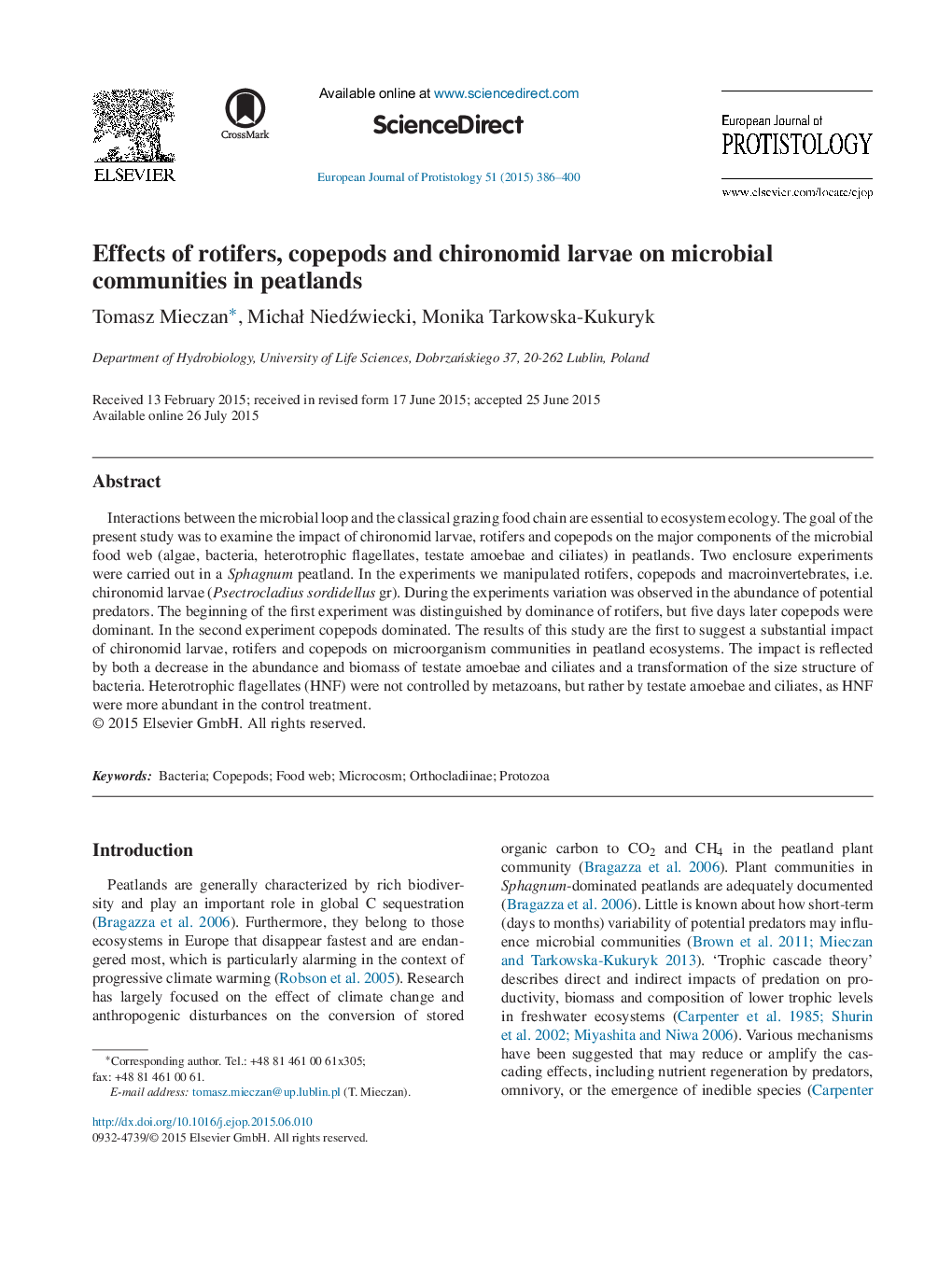| کد مقاله | کد نشریه | سال انتشار | مقاله انگلیسی | نسخه تمام متن |
|---|---|---|---|---|
| 2046925 | 1543285 | 2015 | 15 صفحه PDF | دانلود رایگان |
Interactions between the microbial loop and the classical grazing food chain are essential to ecosystem ecology. The goal of the present study was to examine the impact of chironomid larvae, rotifers and copepods on the major components of the microbial food web (algae, bacteria, heterotrophic flagellates, testate amoebae and ciliates) in peatlands. Two enclosure experiments were carried out in a Sphagnum peatland. In the experiments we manipulated rotifers, copepods and macroinvertebrates, i.e. chironomid larvae (Psectrocladius sordidellus gr). During the experiments variation was observed in the abundance of potential predators. The beginning of the first experiment was distinguished by dominance of rotifers, but five days later copepods were dominant. In the second experiment copepods dominated. The results of this study are the first to suggest a substantial impact of chironomid larvae, rotifers and copepods on microorganism communities in peatland ecosystems. The impact is reflected by both a decrease in the abundance and biomass of testate amoebae and ciliates and a transformation of the size structure of bacteria. Heterotrophic flagellates (HNF) were not controlled by metazoans, but rather by testate amoebae and ciliates, as HNF were more abundant in the control treatment.
Journal: European Journal of Protistology - Volume 51, Issue 5, October 2015, Pages 386–400
